|
I first met Tyler at the Evergreen Brickworks Saturday Farmers' Market in Toronto. It felt like the first “real” farmers’ market since Covid. Masks were no longer mandatory and you could feel the vivacious atmosphere of the market. Tyler’s booth stood out to me right away. It was right in front of the entrance with its orderly but diverse set up of produce, baked goods, and herbal concoctions – not to mention it’s also very hard to miss Tyler, with his bright and enthusiastic spirit. Since I had never seen Foragers Farms at the market before, I immediately started asking questions. I quickly found out that Foragers Farms focused on regenerative agriculture practices, pasture-raised its chickens and collaborated with other farmers and producers. After learning a little bit about the farm, I knew I had to go out and visit it. So I emailed Tyler and his partner Erin and asked if they would welcome me for a tour around their farm. I got an invitation to join them a few weeks later as they conducted a farm tour for their CSA members followed by a pizza lunch at their neighbors’ Tony & Linda’s Headwaters Farm. It seemed like the perfect opportunity, plus how could I refuse a tour and pizza? THE FARMForagers Farms is located about an hour and fifteen minutes from Toronto, 10 minutes from Port Hope and Cobourg. Tyler and Erin found the property about 8 years ago thanks to Erin’s previous connection with the farm (she had volunteered there years ago). The land was owned by Tony and Linda from Headwaters Community Farm and Education Center, who were first partners then neighbors. For the first three years, Tyler and Erin bartered for the land, then they became renters until eventually they were able to purchase the land and permanently move in. Now Tyler and Erin along with their son Cypress are growing over 50 annual vegetables, herbs, flowers, pasture raised eggs organically grown on 3 acres of land. As you walk around the farm, you see the different areas from the seedling greenhouse to the distinct fields to the greenhouses where they grow vegetables like peppers, cucumber, and tomatoes. The farm today is thriving with room to grow, however this wasn’t always the case. During their time as renters, Tyler and Erin faced many challenges and a lot of the times they questioned whether they should invest in the farm or not. From certain crops, infrastructure to improving the nature of the soil, there are so many ways to invest time and money on a farm. For example, just to get an idea of what I mean, to grow and harvest asparagus, you need the plant to grow for 3 years before it produces any fruit! Now that they own the land, Tyler and Erin are looking to invest in an orchard and possibly convert one of the greenhouses to grow mushrooms. They would also like to plant 10 acres of forest around the farm. While they want to be ambitious, they also want to make sure they don’t stretch themselves too thin. They have a couple of interns on the farm and volunteers who come help out but with the majority of the responsibility falling on Tyler and Erin – it can get challenging at times to keep up with all the logistics of running a farm! About Tyler & ErinTyler and Erin have brought their past work experiences and knowledge to start and bring to fruition the farm and community Foragers Farms is today. Erin has a vegan cooking certification which she used during her time helping start-up sustainably-minded restaurants like Lil Organic Kitchen Whitby/Cobourg. She also manages all the logistics of the CSA, communicating with customers, harvesting, washing/cleaning of the vegetables, and delivering. Tyler on the other hand brings his background as a tradesman to the farm to design and build the farm’s infrastructure. He also brings his wild-spirit, passion for adventure and living close to the land to all the planning and managing a farm requires. He is the head-farmer and you will most likely always see Tyler out on the field or in the greenhouse – except on Saturday mornings when he is at the Evergreen Farmers’ Market. The Tour Part I: Seedling HouseThe first part of the tour is the Nursery. This is where everything starts — at the seed. As we walked into the nursery, we were met with so much life, just seedlings everywhere waiting to be planted on the field. It’s no wonder it is Tyler’s favorite place to be in the whole entire farm! At this stage in the process, the seeds are planted in the seedling trays with a soil mix, where they then go through germination. This is where the seed ‘takes’ and becomes a seedling. This process gives the plants a head start before they are planted in the field. Seedlings are great because you can start growing crops ahead of time and have them available earlier in the season. During the Spring/Fall Tyler will water once a day and as the temperature rises in the Summer months, the watering increases to twice a day. The plants take about a month from seed to seedling, but through precise planning, Tyler has planned so that every week seedlings make it out to the field. In total, they have around 25 plantings throughout the season! However, the seedling house did not always look like it does today– it also went through an evolution as the farm grew. Tyler and Erin have gotten help from businesses across grant-type funding. They have been slowly expanding their greenhouse year after year. It’s hard to believe they started with half of the space they now have. This year they even added a second row during the Spring as they started selling seedlings. Through a grant from Big Carrot, they have been able to invest in durable seedling trays with windstrips and install automations in the greenhouse like the Thermostat controls – which allows the greenhouse to self-monitor its temperature, giving Tyler one less task to worry about. Foragers Farms’ seedling sale is in March so you’ll have to wait until next year if you are interested in purchasing some seedlings! Part II: First FieldAfter the Seedling house, we went to the first field where Tyler explained how it all started a few years ago. During the first year of their venture, the field had a lot of weed problems. Tyler was able to cultivate the soil slowly in order to pave the way for the microbial process to happen. As the farm is focused on regenerative agriculture, Tyler focuses on crop rotation, cover crops, and feeding the soil through organic matter, compost, and kelp (seaweed) to improve soil condition. While seaweed is not the first thing that would pop into your mind as soil food, it is actually not surprising when you think about it. We know seaweed has a lot of nutritional benefits and micronutrients so it's no wonder that it can also promote natural growth in plants and feed the soil in a way that helps break down compost and other organic material. Fast forward to today and there are 40 different varieties of vegetables growing across the farm’s 3 acres from peas, herbs, lettuces to broccoli, corn, onions, and much more! They have also planted tree rows in between the field, which helps release nitrogen back into the soil. This is the beauty of regenerative agriculture – you are building an environment that essentially works together in a harmonious cycle. Part III: Greenhouses and Fields 2&3 Rows and rows of green are what you first see when you enter the greenhouse, then you notice the tomatoes, peppers, and cucumbers in abundance! Tyler has installed wires across the plants to take advantage of the greenhouse. This way by pruning intensely and effectively, the plants can grow up to 20ft long – producing Tomato galore! Some of the interesting varieties being grown in the greenhouse included Socretes cucumbers and Indigo Cherry tomatoes. We then went to the 2nd and 3rd fields which were the heavier feeding crops. The difference between light and heavy feeding crops is determined by how much feed the soil needs. Broccoli, cauliflower, and corn are a few examples of heavier feeding crops. Tyler also showed us the installed drip tape below the crops on this field which ensures that the water goes where it needs to go (to the plant and the root). These fields were also the driest fields on the farm as there was a lot of erosion from all the 200 years of tilling it endured. Erosion is very common in conventional row farming as a result of using heavy pesticides and the practice of leaving the soil uncovered between crops. In Regenerative farming, crop rotations and cover crops are used as a way to feed, protect, and nourish the soil. Tyler showed us the cover crop ‘Tillage Radish” he was growing in one of the fields. Cover crops are not meant to be harvested but instead its purpose is to protect the soil from being exposed to the sun when crops are not being grown and to bring organic matter back into the soil. The tillage radish will stay in the field until Fall and feed the soil as it decomposes. Part IV: Challenges, Community, & Chickens!Farming is not easy, every year there are new challenges, no year is the same. Different years bring different pest problems, the ever-changing weather brings unforeseeable challenges, and sometimes the land itself can bring on its own set of hardships. This year, Tyler and Erin lost about 40% of their garlic yield – a hard loss to stomach as garlic is a crop that sells really well and can last through the winter. However, Tyler and Erin are not defeated by this as they know this is the trade-off to the type of farming that they are doing. While crop rotation is great for the soil, it does bring its challenges when navigating fairly new land like Tyler and Erin are doing. Every time they plant something, it’s a gamble – you can test the soil and predict what may work well but you won’t know until you test it. It’s safe to say that there won’t be any garlic planted on this field again but other crops like asparagus, rhubarb, and chives that may thrive in this field’s environment. As we stared into the fields beyond, Tyler and Erin shared their vision for the future of the farm. In the past years, they’ve been expanding by half an acre but now they plan to focus on what they have and make room for more family time with their son Cypress. As they shared that vision, we couldn’t help but notice the chickens. Their pasture-raised chickens are a way to diversify the farm. These laying hens live out on the land and their moving chicken-mobile. By moving the chickens around the farm, they can regenerate the soil naturally through using the chickens as natural-scratchers and fertilizers as they roam. They also feed them produce leftovers, and ferment their organic feed which provides them with more nutrients. This in turn makes for some delicious eggs from very happy hens. Tyler and Erin truly “believe it is the best way to raise eggs.” If you are ever at their farm gate store, make sure you pick up one or two dozens of the Free Range Pasture Raised Eggs! As Tyler and Erin were given a chance to be able to work on the land that is now theirs, they also want to give back to the community and share their land with others looking to make a start. During the tour, we were able to see the fields they’ve rented out to two entrepreneurs and farmers, Marissa from Marissa’s Herb Garden and Heather from Bloom Therapy. They believe community is everything, and that “by fostering relationships focusing on clear communication/intention with our partners, it creates a mutual benefit to the business and the community.” Tyler and Erin still collaborate with their neighbors and close friends, Tony and Linda from Headwaters Community Farm and Education Center like the tour today. We were able to enjoy some amazingly fresh pizzas made by Tony at Headwaters Farm. The pizza dough was made with organic flour and love by Tony, and topped with local and fresh ingredients from Foragers Farms like zucchini and onions. Tony baked each one in the outdoor clay oven, which made for a pretty awesome way to end the tour. The pizzas came accompanied with salad made with Erin’s Honey-garlic vinaigrette and a glass of freshly squeezed lemonade. We got to enjoy our pizzas on picnic tables on the Headwaters estate which overlooked its wonderful acres of land. It was truly a beautiful day, everyone agreed that the tour was a success!
|
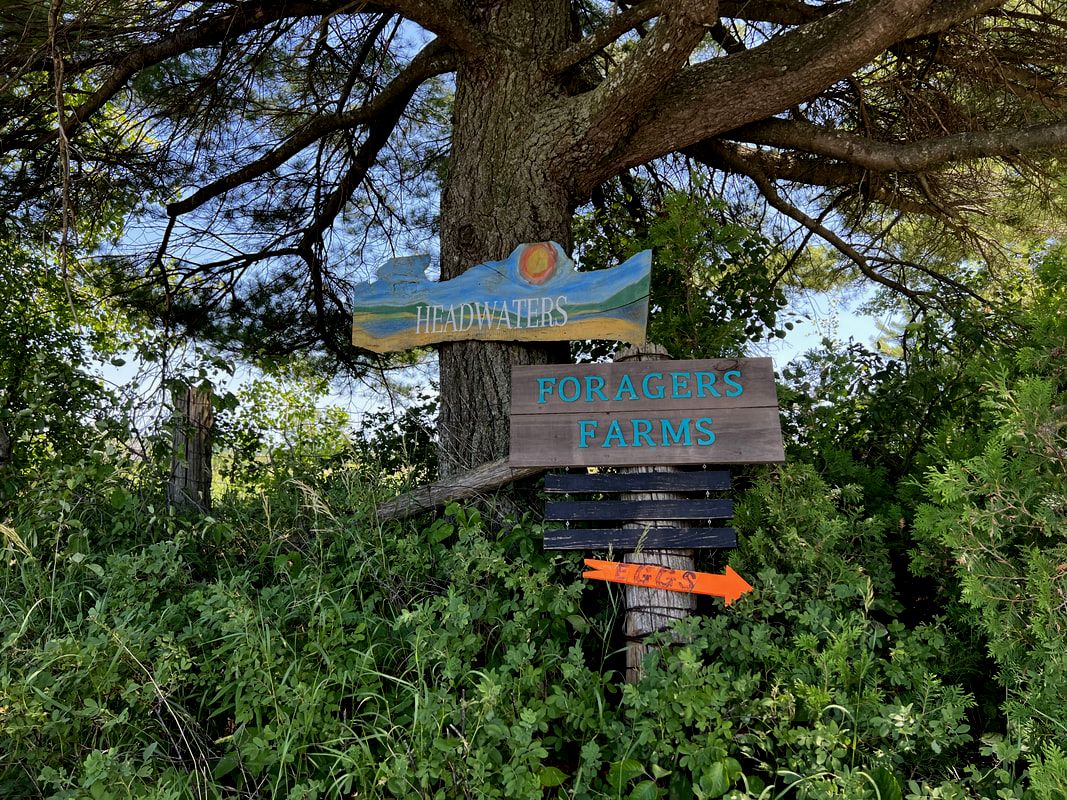
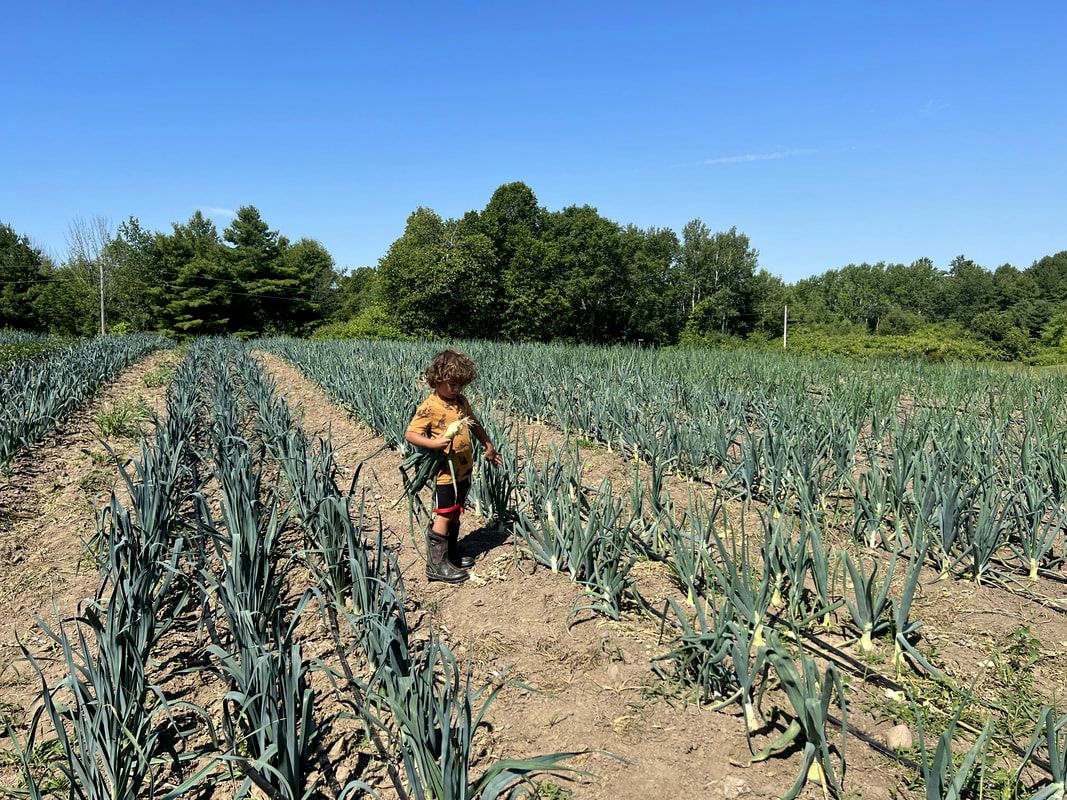
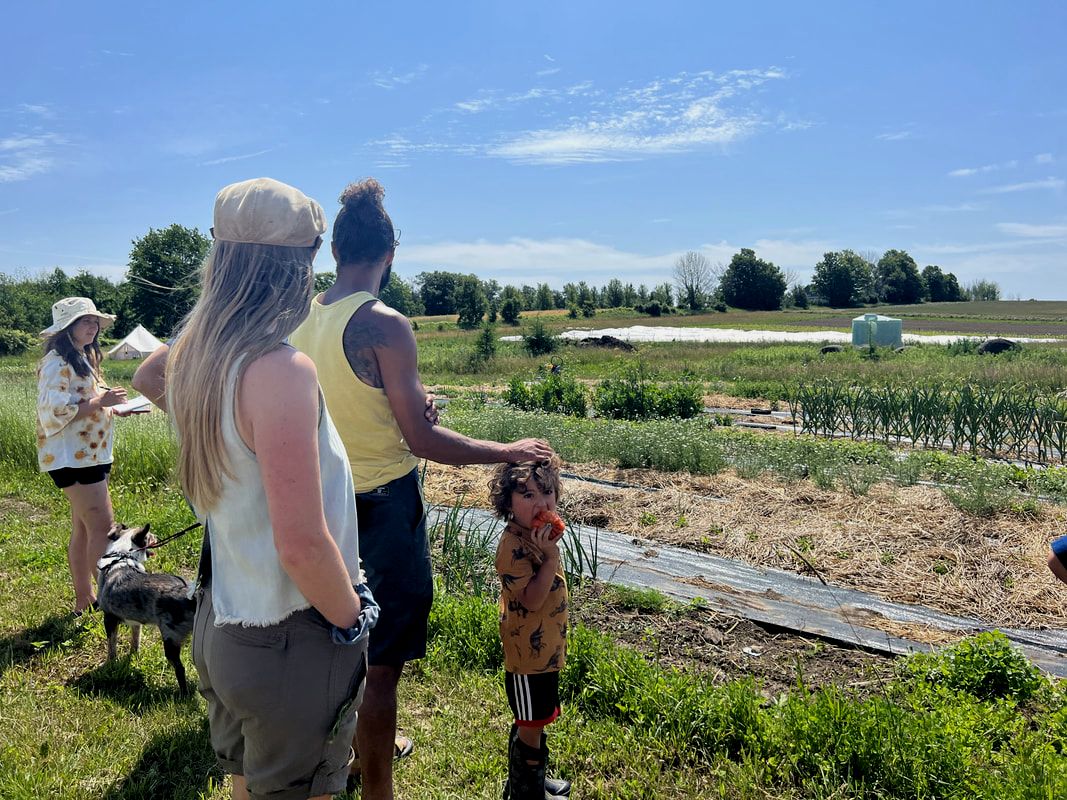
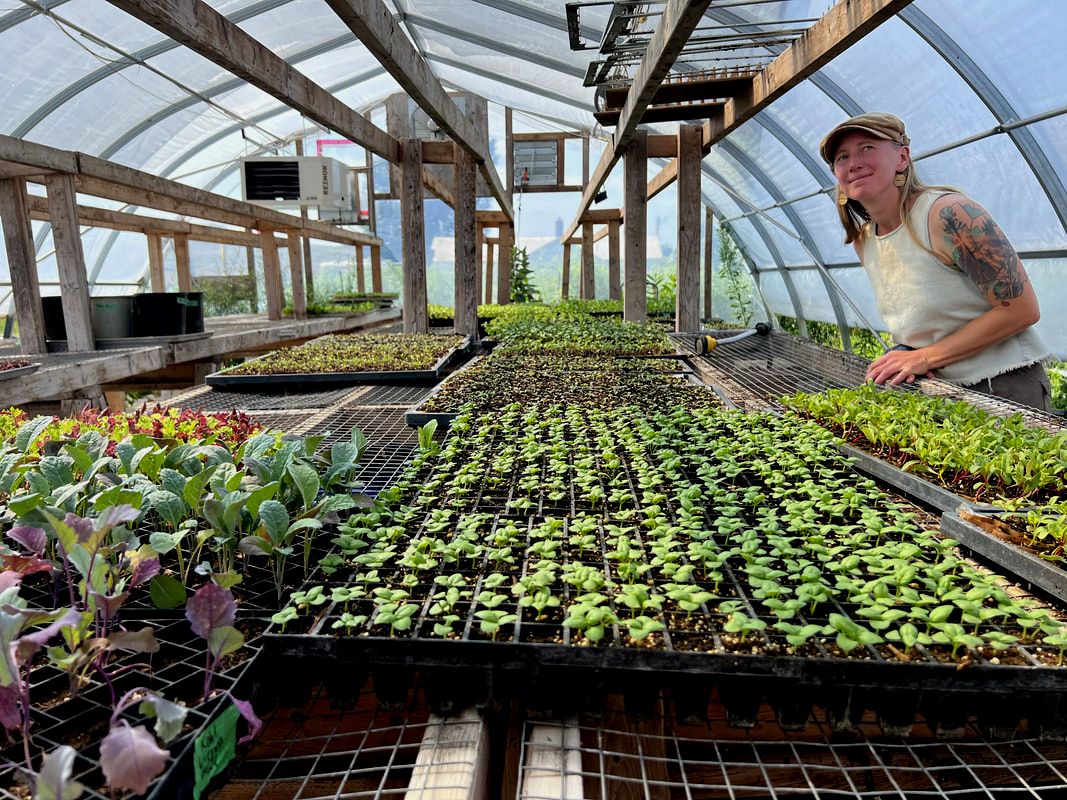
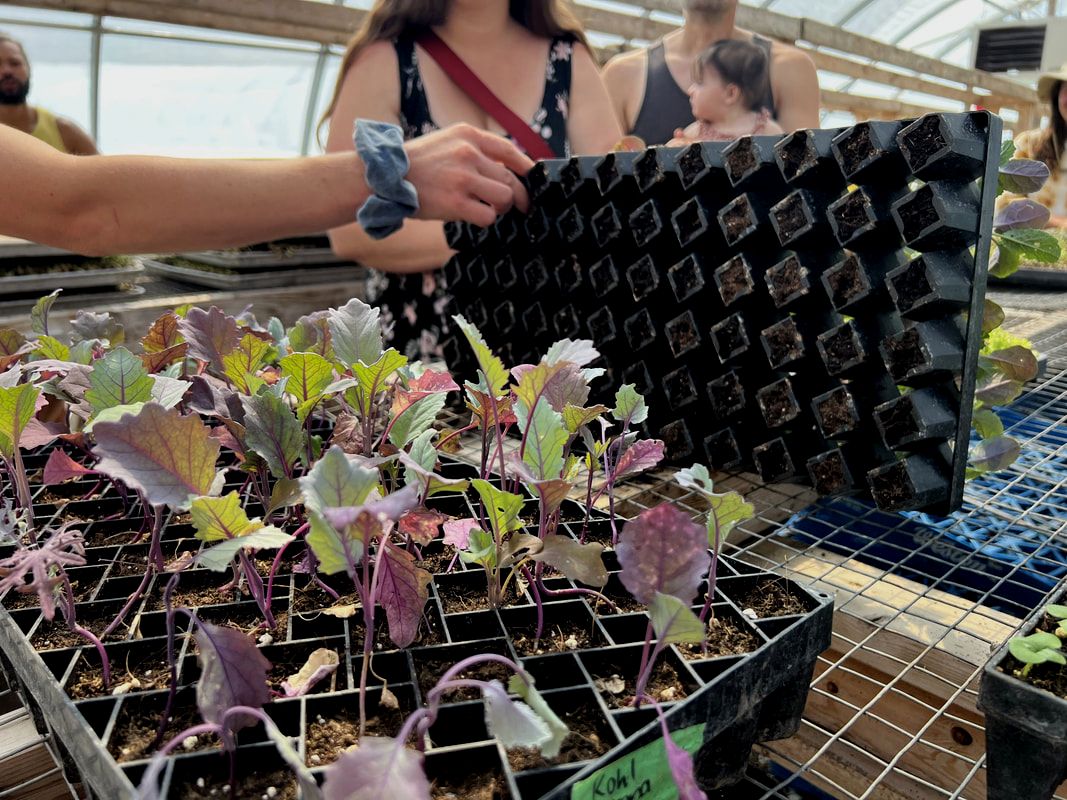
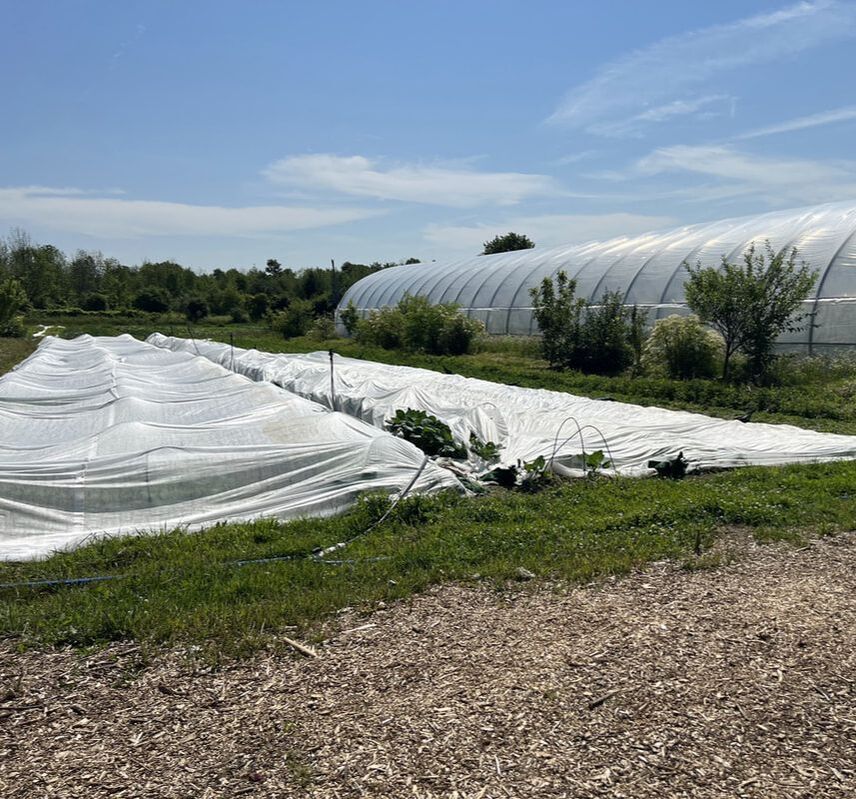
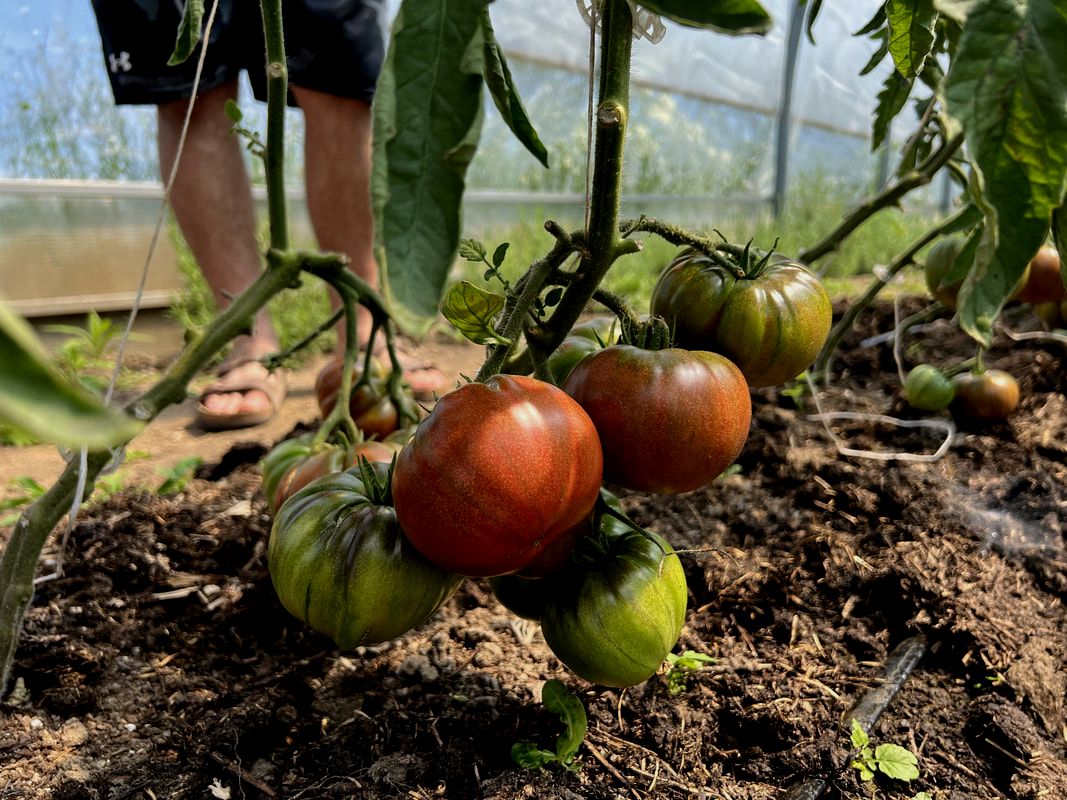
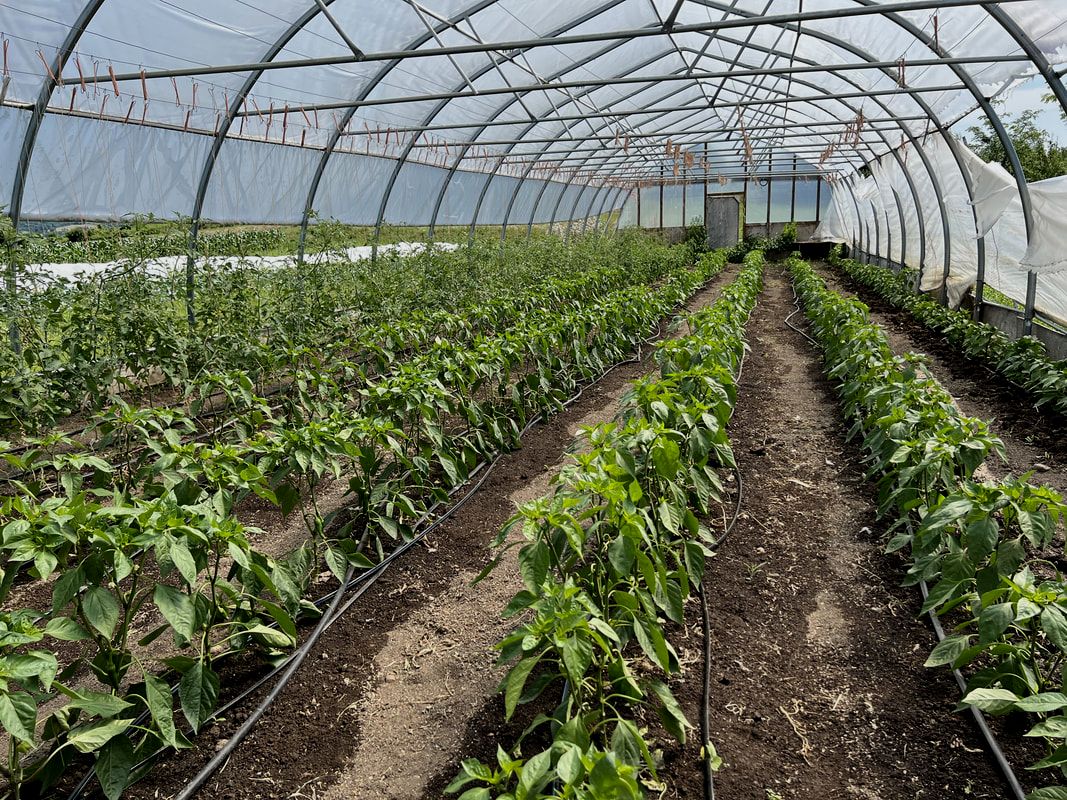
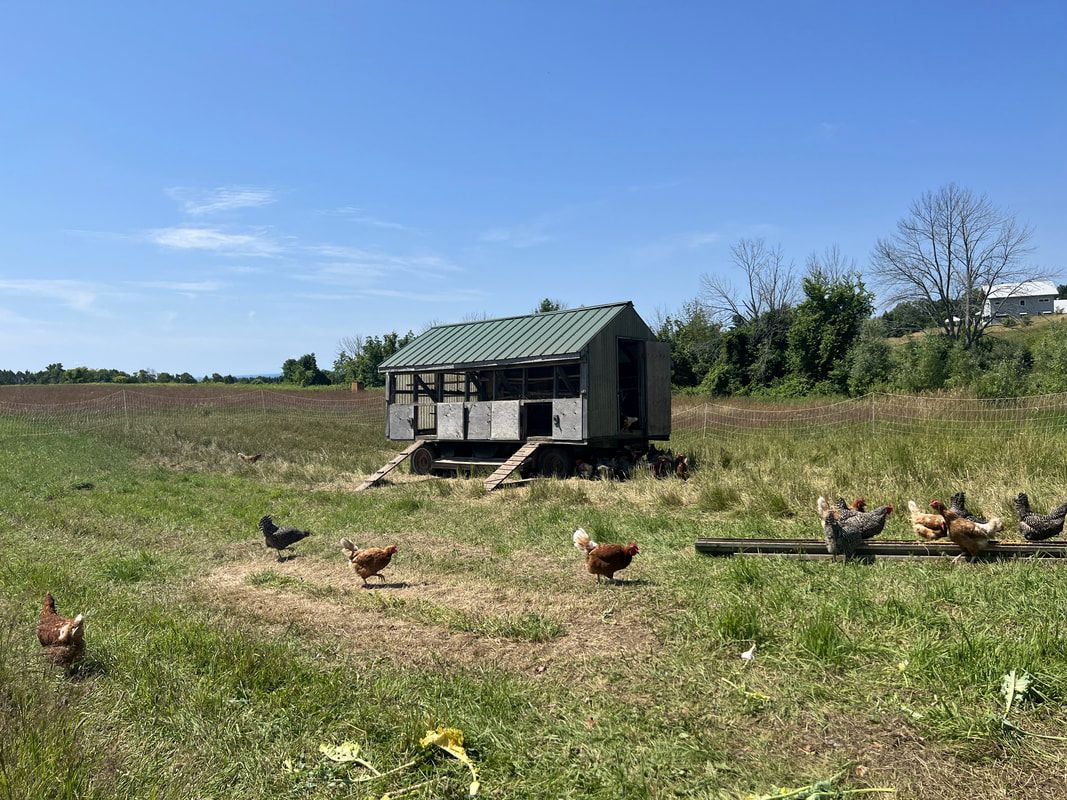
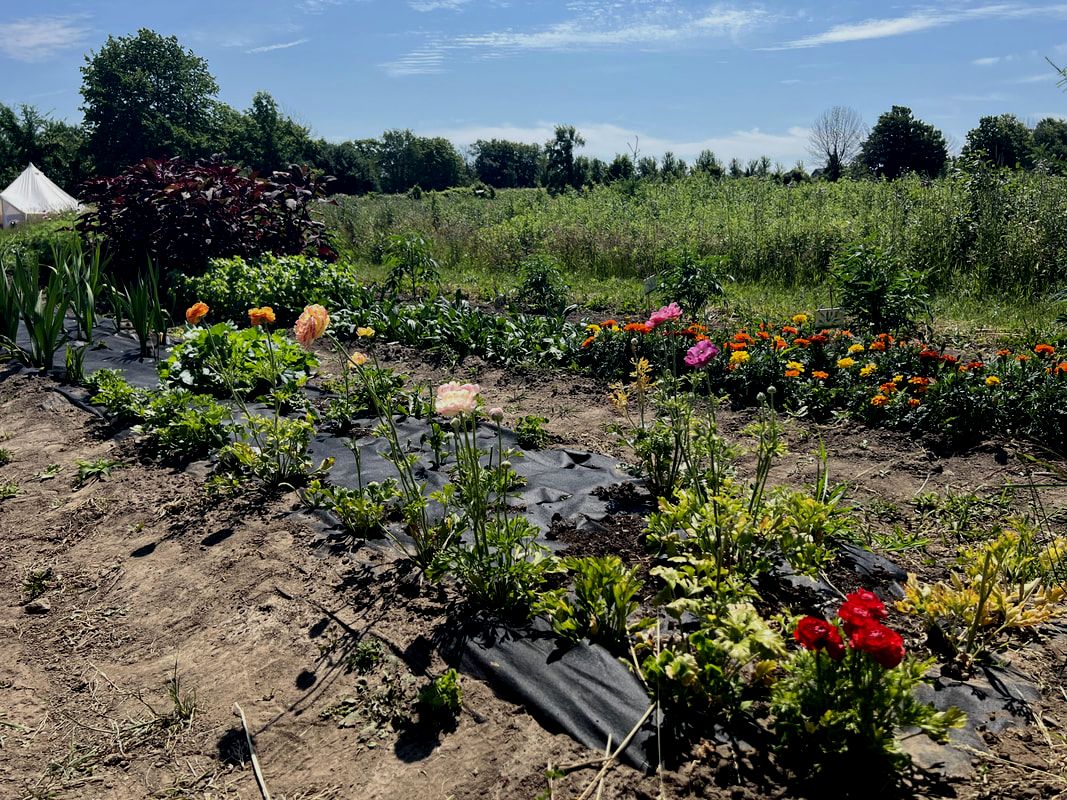
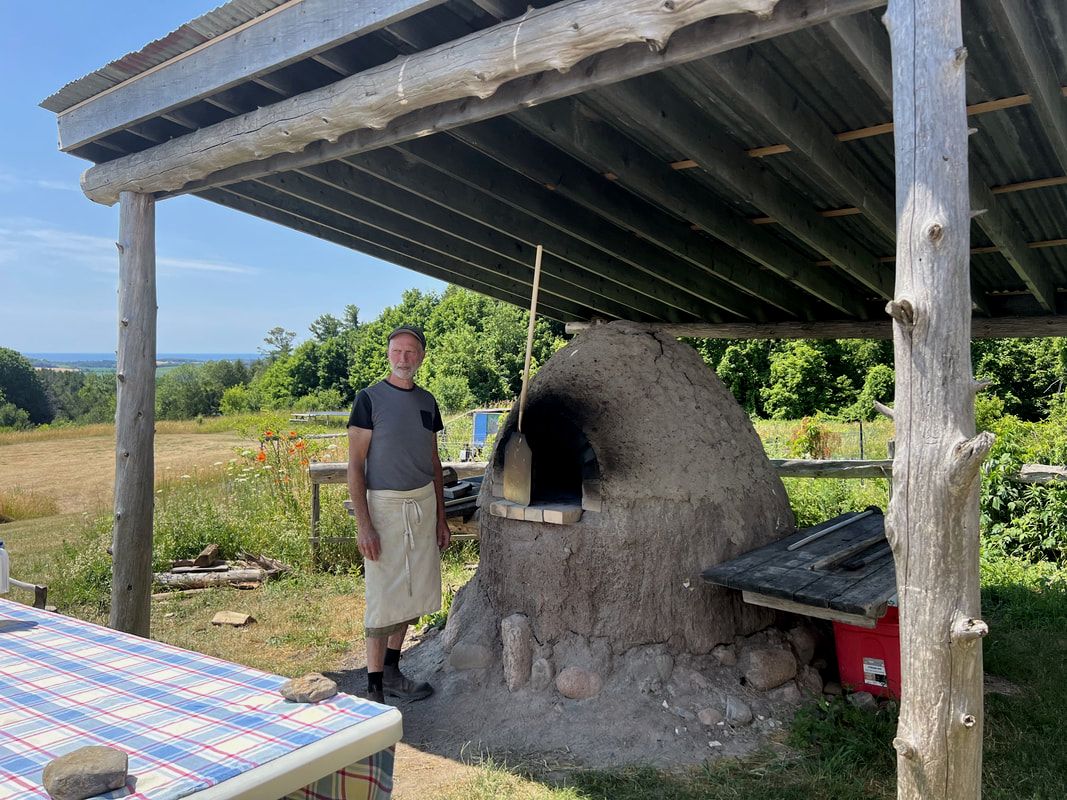
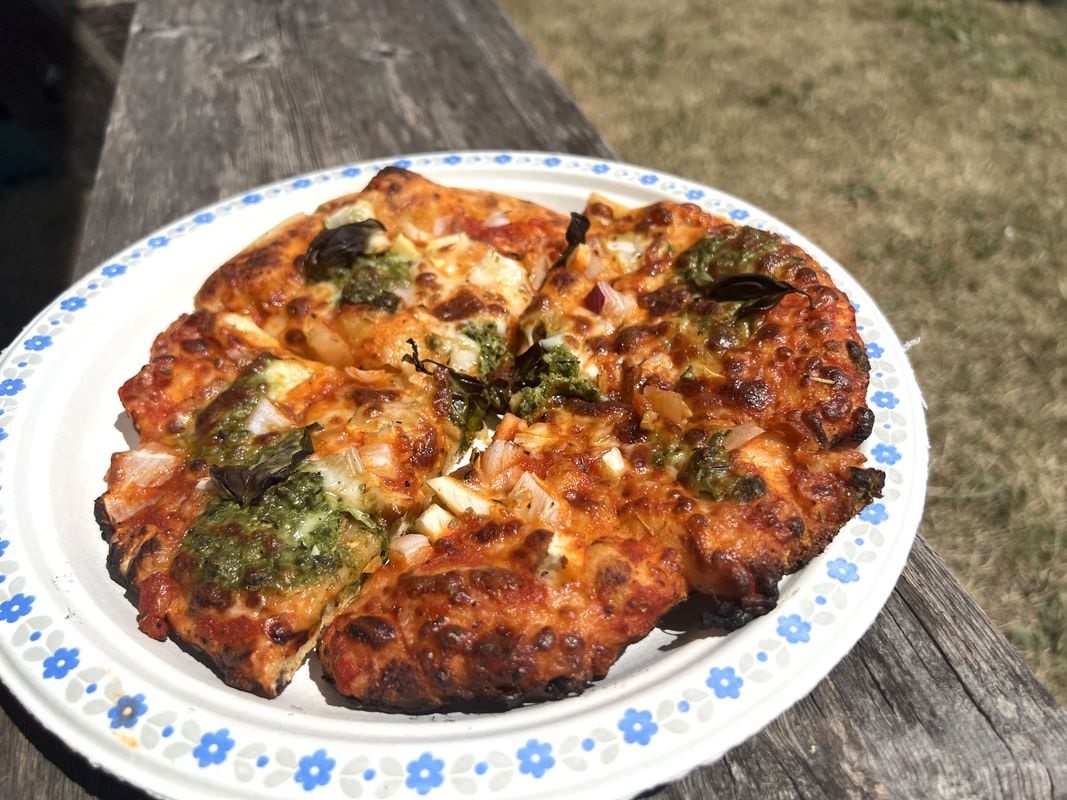
 RSS Feed
RSS Feed
